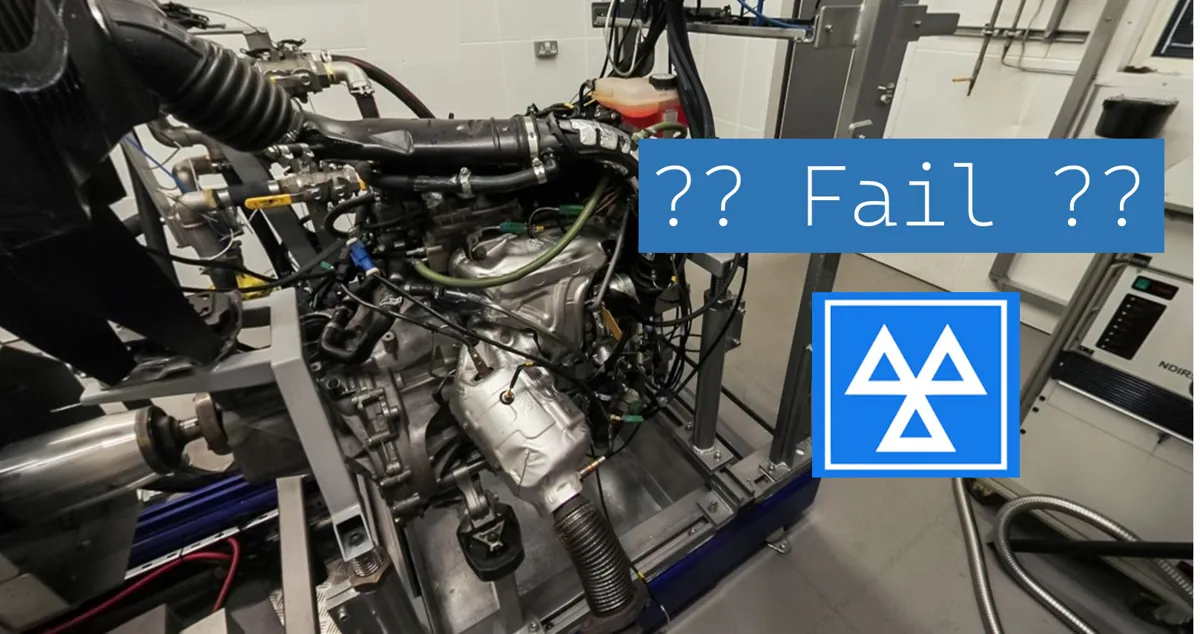In the UK, the traditional tailpipe emissions test is not mandatory. This is because it is impossible to reliably start and hold the engine at an elevated speed to perform the test in a fair manner.
Why Hybrid Cars are Exempt from Emissions Testing
If any MOT garage tries to test your hybrid, you can show them this web page which details the UK testing legislation vehicle exemptions:
- Vehicles with fewer than 4 wheels
- Vehicles with 2-stroke engines
- Hybrid vehicles
- Quadricycles
- Hydrogen fuel cell vehicles
- Electric vehicles

Point 3 mentions hybrids. As mentioned above, the complex engine control software found in a hybrid is responsible for starting and running the engine. This makes it impossible for an MOT tester to perform the test. Usually they would insert a test probe, start the engine and then hold the engine speed at eg. 3000RPM.
What is an Emissions Test
An emissions test, also known in the US as a smog check, is a procedure that measures the amount of pollutants emitted by a vehicle’s engine. This test is typically required by law to ensure that vehicles meet certain environmental standards and are not emitting excessive amounts of harmful pollutants into the air.
During an emissions test, a device is attached to the tailpipe of the vehicle and measures the emissions of carbon monoxide, nitrogen oxides, and other pollutants (smoke in diesel vehicles). If a vehicle fails the emissions test, it means that it is not operating at optimal efficiency and may be producing harmful pollutants that contribute to air pollution and negative impacts on public health. In some locations, vehicles that fail emissions tests may be required to undergo repairs or modifications to reduce their emissions levels before they can be deemed roadworthy again.
What Emissions Standards do Hybrids Have to Meet
The important takeaway is that the euro 6 standard only applies to the vehicle manufacturer. The MOT applies to the vehicle owner and must be renewed annually once the car is over 3 years old.
I was in the automotive test industry for many years and involved in vehicle ‘homologation’. What this means is that manufacturers have to certify their vehicles meet the standard at point of sale (brand new).
An MOT centre does not have the required technology to verify that a car meets euro 6. The test is currently a WLTP in Europe and is performed in a lab under very strict conditions and can take hours to conduct. Clearly this is not practical in some back street garage!
Euro 6 – What it means
In the UK, for example, hybrid cars are subject to Euro 6 emissions standards, which are designed to limit the amount of harmful pollutants that vehicles can emit. Euro 6 standards apply to all new cars and light commercial vehicles registered after September 2015, and limit emissions of nitrogen oxides (NOx) to 80mg/km and particulate matter (PM) to 4.5mg/km. Hybrid cars that meet Euro 6 standards are considered to be low-emission vehicles and are generally more eco-friendly than traditional gasoline vehicles.
It’s worth noting that emissions standards may continue to evolve and become more stringent over time, as governments and regulatory bodies work to address air pollution and other environmental concerns. As such, it’s important for hybrid car owners to stay informed about the emissions standards that apply to their vehicle and to ensure that their car is operating efficiently and meeting those standards. This may involve regular maintenance, using high-quality fuel, and following recommended driving habits to reduce emissions.
What Factors Impact the Emissions of a Hybrid Car?
The emissions of a hybrid car can be impacted by a number of factors, some of which are similar to those that affect traditional gasoline vehicles, while others are unique to hybrid technology.
One key factor that can impact emissions is driving style. Like traditional gasoline vehicles, hybrids emit more pollutants when they are driven aggressively, such as during rapid acceleration or high-speed driving. As such, it’s important for hybrid car owners to adopt a driving style that is gentle and steady, with gradual acceleration and smooth braking. This can help to reduce the overall emissions produced by the vehicle.
Another factor that can impact emissions is the condition of the vehicle’s battery. Hybrid cars rely on both an electric motor and a gasoline engine, and the battery plays a critical role in storing and delivering energy to the electric motor. If the battery is not functioning properly, it can lead to increased emissions as the gasoline engine works harder to compensate for the lack of electric power. To that end, it is worth considering battery replacement for batteries in a poor state of health.
Other factors that can impact emissions may include the type and quality of fuel used, the maintenance and upkeep of the vehicle’s engine and exhaust system, and even external factors such as air temperature and road conditions. By staying informed about these factors and taking steps to reduce emissions where possible, hybrid car owners can help to minimize the environmental impact of their vehicle and enjoy the many benefits of hybrid technology.
Do Hybrid Cars Produce Less Emissions than Traditional Gasoline Vehicles?
n general, hybrid cars do produce fewer emissions than traditional gasoline vehicles, particularly in terms of the emissions that contribute to air pollution and climate change. This is because hybrid cars use a combination of an electric motor and a gasoline engine, which allows them to operate more efficiently and with lower emissions overall.
According to the U.S. Department of Energy, hybrid cars can emit up to 90% less pollutants than traditional gasoline vehicles. This is because hybrid cars are able to use their electric motor for low-speed, stop-and-go driving, which is when traditional gasoline vehicles tend to produce the most emissions. Additionally, hybrid cars can use regenerative braking to capture and reuse energy that would otherwise be lost during braking, further reducing the emissions produced by the vehicle.
It’s worth noting, however, that the amount of emissions produced by a hybrid car can still vary depending on a number of factors, including driving style, battery condition, and external conditions such as air temperature and road conditions. As such, while hybrid cars are generally considered to be more eco-friendly than traditional gasoline vehicles, it’s important for hybrid car owners to stay informed about emissions standards and take steps to reduce emissions where possible. This may include regular maintenance, using high-quality fuel, and adopting a gentle driving style to minimize emissions.
Before You Go…
Check out these posts that you may find interesting:


1 thought on “Do Hybrid Cars Need an Emissions Test”